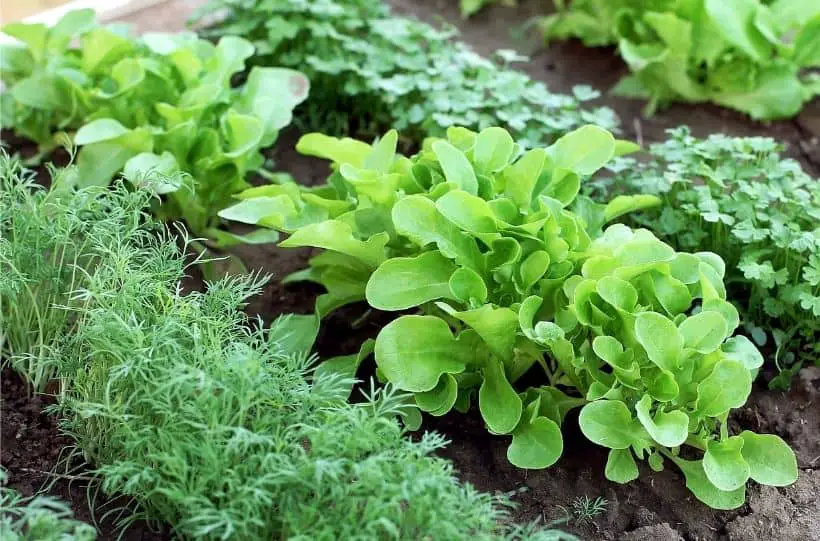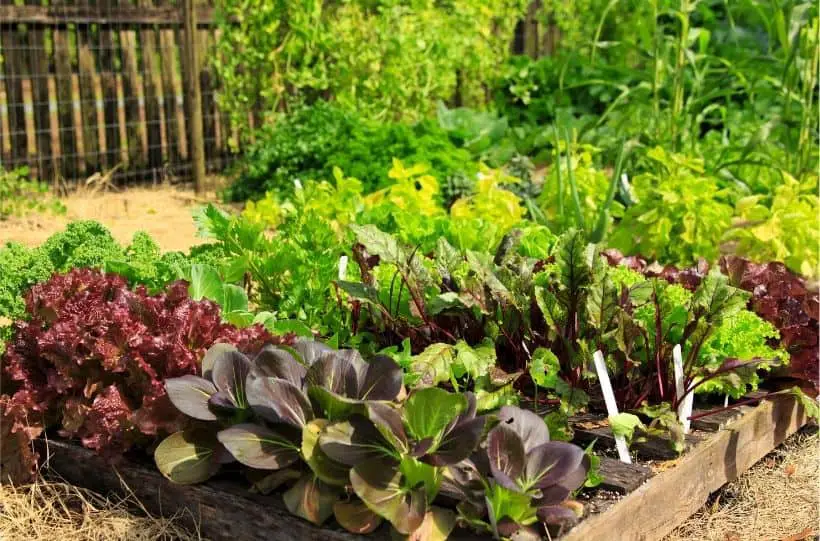Beginner’s Guide to Starting a Vegetable Garden
If you’ve ever wanted to start a vegetable garden but weren’t sure how to get started, this guide is for you!
This post will outline the basics of starting a vegetable garden, from picking a location to choosing what to plant. Read on for tips on creating your very own vegetable garden!

As a beginner, we recommend starting with a simple vegetable garden and then branching out from there.
If you have a friend who gardens ask them about their most common plants and maybe include them in your own plan.
Most importantly, have fun! Wherever you are or whatever it is that you are growing, enjoy the process of turning a space into something beautiful!
Location, Location, Location
The first step in starting a vegetable garden is to pick a location. The best place for a vegetable garden is a spot that gets plenty of sunlight and has good drainage.
If you don’t have a garden spot, you can grow vegetables in containers on your patio or deck. Some important things to remember are:
- Is it a sunny or shady location? The majority of vegetables grow best in full sun.
- Do you intend to grow in the ground, in raised beds, or in pots?
- Is there easy access to water? Will a hose reach or there is another means of accessing water?
Making Your Vegetable Garden
Once you’ve picked a location for your vegetable garden, it’s time to start making it! The first step is to mark out the boundaries of your garden. You can do this with stakes and string or even a garden hose.
If you’re planting in raised beds, you’ll need to create the beds first. Make your raised beds no less than 11 inches deep. Ideally, your beds will be at least double this amount to work in them easily.

- Raised vs In-Ground Garden Beds: Which Should You Choose?
- Galvanized Steel Vs Wood Garden Beds: Which is Best?
- Are Plastic Raised Beds Toxic? The Truth!
- How Deep Should A Raised Garden Bed Be?
Choosing the Right Plants
The next step in starting a vegetable garden is to choose the right plants. Not all vegetables are created equal, so you’ll want to pick vegetables suited for your climate and growing conditions.
Preparing the Soil
Now that you’ve picked a location and chosen your plants, it’s time to prepare the soil for your vegetables. The best way to prepare the soil is to use a garden tiller. If you don’t have a garden tiller, you can also use a shovel or hoe to loosen the soil.
- How To Test And Amend Your Soil
- How to Add Calcium to Your Soil
- How to Improve The Acidity of Your Soil
More Tips for a Productive Vegetable Garden

- Starting Seeds Indoors
- Start Composting
- Best Mulches for The Vegetable Garden
- Use Marigolds for Pest Control
- Companion Plant Vegetables
- Flowers You Should Plant in Your Vegetable Garden
Recommended Tools for Your Vegetable Garden
Every gardener needs a few essential tools to maintain their garden. When choosing tools for your vegetable garden, be sure to select tools made for gardening.
Cheap tools may seem like a good deal, but they will likely not last long and need to be replaced. Here is a list of some recommended tools for vegetable gardens:
- Garden hose and/or Watering Can
- Hand Trowel
- Garden Knife
- Digging Shovel
- Digging Fork
- Hoe
- Leaf Rake
- Wheelbarrow
- Pruning shears
- Heavy-Duty Gardening Gloves
Maintaining Your Vegetable Garden
The best way to maintain your vegetable garden is to keep it well-weeded and watered. Weeds can quickly take over a garden, so it’s essential to stay on top of them.
Watering your vegetable garden is also important, especially during hot weather. Ensure to water your plants early in the morning or late in the evening.
Activities such as composting and mulching, for example, improve soil health by recycling nutrients back into the earth. They also help to moderate soil temperature and retain water within the soil.
With a little bit of care and maintenance, you can enjoy a bountiful vegetable garden!
- Watering
- Weeding
- Fertilizing
- Managing Vegetable Garden Pests
- Dealing With Disease
- Essential Garden Maintenance Tips
- Winterize A Garden
Harvesting Your Vegetables
Once your vegetables start to ripen, it’s time to harvest them. Here are some guides on harvesting your vegetables:

This is a good time to think about preserving some of your bounty from your garden. When it comes to keeping your pantry well-stocked, there are a few simple methods that may help you out:
Gardening Out of Season
In this stage of your gardening adventure, you’ll be thinking about what did well in your garden and what didn’t.
You’ll also be watching for signs of pests or diseases taking hold that may need to be addressed before they become a problem. Additionally, take the time to create new plans for your garden next year.
Also, use this time to take care of some of the maintenance items on your list like:
- Cleaning your tools
- Building or repairing your garden beds and trellises
- Planning your crop rotations
- Starting a compost bin
These are all tasks you can work on during this time that will lead to an even more successful garden next season!
Now it’s time to get started! With a little bit of preparation and planning, you too can create a vegetable garden. Happy gardening!

